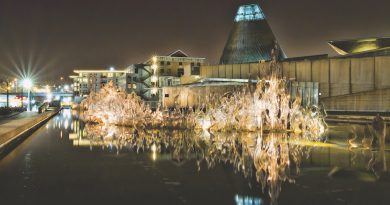Photo Series Explores American Indian Identities
For eight years, UWT has hosted an annual symposium that focuses on the theme “Art and Identity: Portraying Our True Selves” to educate students on the forgotten American Indian communities and tribal lands that make up the state of Washington. Speakers have addressed the epidemic of violence against American Indian women, the importance of preserving and revitalizing American Indian languages, historical traumas, and current tribal innovations. This year’s focus is on identity formation through art, with Pacific Northwest photographer and creator of Project 562, Matika Wilbur, discussing her national documentary project dedicated to photographing contemporary American Indians.
Wilbur created Project 562 in 2012 and currently takes photographs of citizens from the 562 federally-recognized tribes in the United States. These photographs, give the individuals a chance to tell their story. So far, Wilbur has photographed 161 tribes in geographically remote reservations. The purpose of the project is to humanize the “vanishing race” and share the stories they, themselves, would like told. Project 562 has been successful thanks to a Kickstarter campaign in which 3,882 backers pledged an astounding $213,461.
Why is Project 562 important? November is American Indian Heritage Month, which reminds us to celebrate the work of Indian artists. This project helps address current challenges American Indians are facing, such as the legacy of colonization and racism, stereotypical misrepresentations, and the absence of American Indian images and voices in mass media and the national consciousness.
Assistant Chancellor for Equity and Diversity Sharon Parker, who is of African and American Indian (Susquehama/Tslagi) heritage, explains that the purpose of UWT’s yearly symposium is to shed much-needed light on the tribal communities that surround campus. She says that non-Native citizens have been mixing up tribes and misrepresenting indigenous cultures for years. Few Washingtonians know, for instance, that the proper names for Mount Rainier were once Tahoma, Tacobeh, and Pooskaus. “We [American Indians] do not get to tell our story,” says Parker. “Being able to portray yourself in your [own] language and words is critical.”
Wilbur’s work has been recognized locally, regionally, and nationally. Matika has photographed elders, teachers, activists, and artists that share the lifestyle, traditions, and struggles of contemporary American Indians. According to Wilbur, in a TED Talk she gave in Seattle in 2013, she asks her subjects what the issues are in their specific communities and what it means to be a “real Indian.” Parker comments, “[Wilbur’s] photography is so clear and real. They are real people in real lives, showing their true identity.”
Because American Indians are misrepresented in U.S. media, many non-American Indians are consistently blind to the work tribes do to maintain their cultural autonomy. An example is the Fishing Rights War of the 1970s, when members of the Puyallup and Nisqually tribes were arrested for overfishing salmon, despite a treaty that recognizes their Indigenous right to harvest salmon, which is a central, sacred part of their traditional culture. The tribes fought for their land and in 1975, Judge Bolt favored their settlement.
According to Parker, Tacoma has an enormous population of Urban Indians. Let’s not forget that UWT sits on Puyallup tribal land and is surrounded by 29 Washington tribes. Some tribes that are close to Tacoma are Snoqualmie and Nisqually. Parker says, “I hope they [UWT students] become a lot more educated, that they would recognize that we are contemporary people living contemporary lives, not just something from the historical past.”
There are a variety of ways that non-American Indian peoples can respectfully honor American Indian Heritage Month. We can raise funds for Wilbur. Also, the Tacoma Art Museum is looking for people to gather archives of Wilbur’s work. People can also read books and films on American Indian History to be more aware of their culture. On a broad scale, we can start by honoring the experiential knowledge of indigenous peoples by reading books and watching films they create themselves, rather than believing stories outsiders have historically told about them.
Parker hopes that this event can help students and faculty to research more about their tribes and incorporate it into their class curriculum and discussion. This is a time where we should build cultural bridges, abandon stereotypes, and garner a more culturally accurate view of American Indian history.
Check out Project 562 at project562.com







